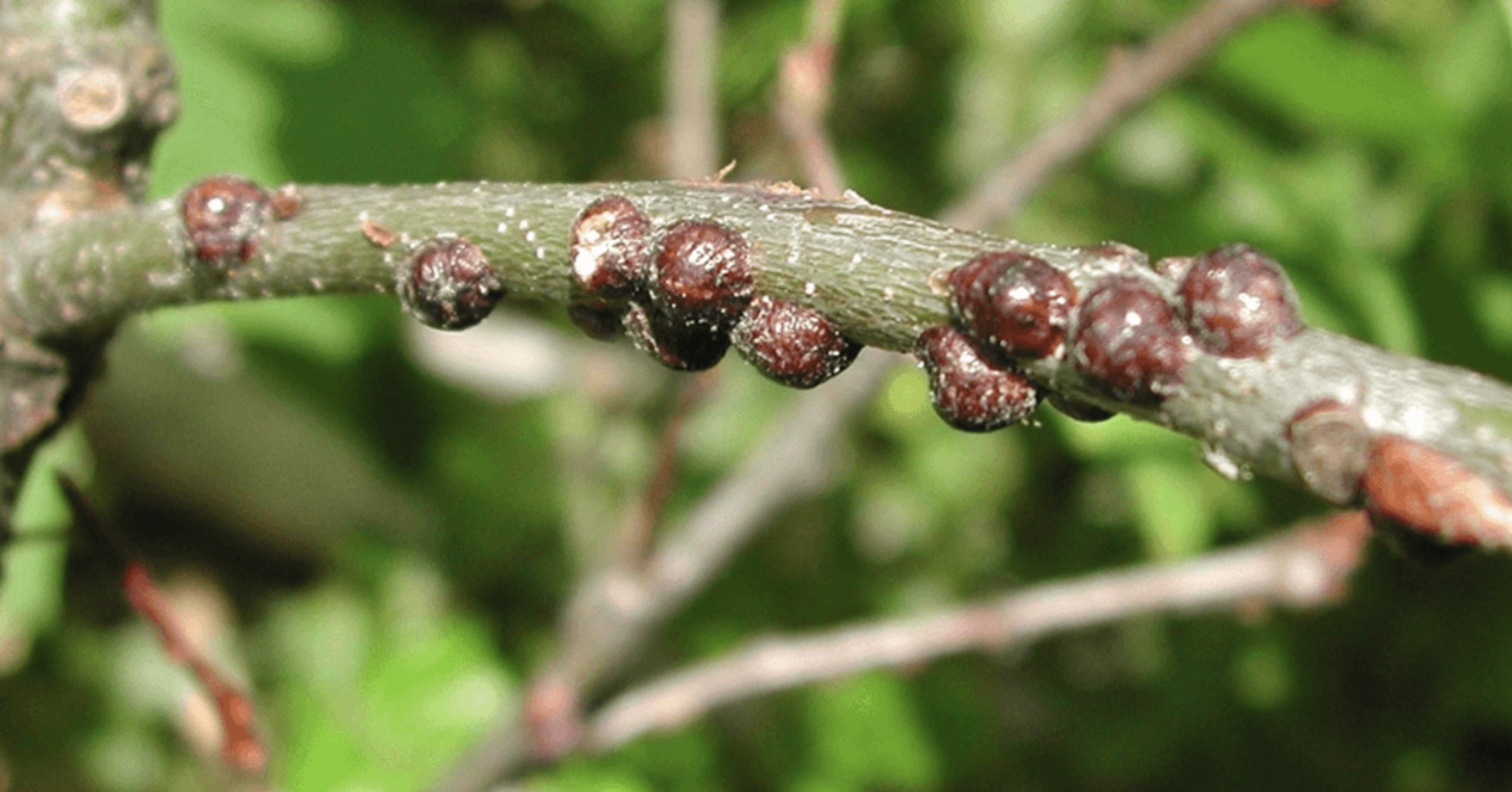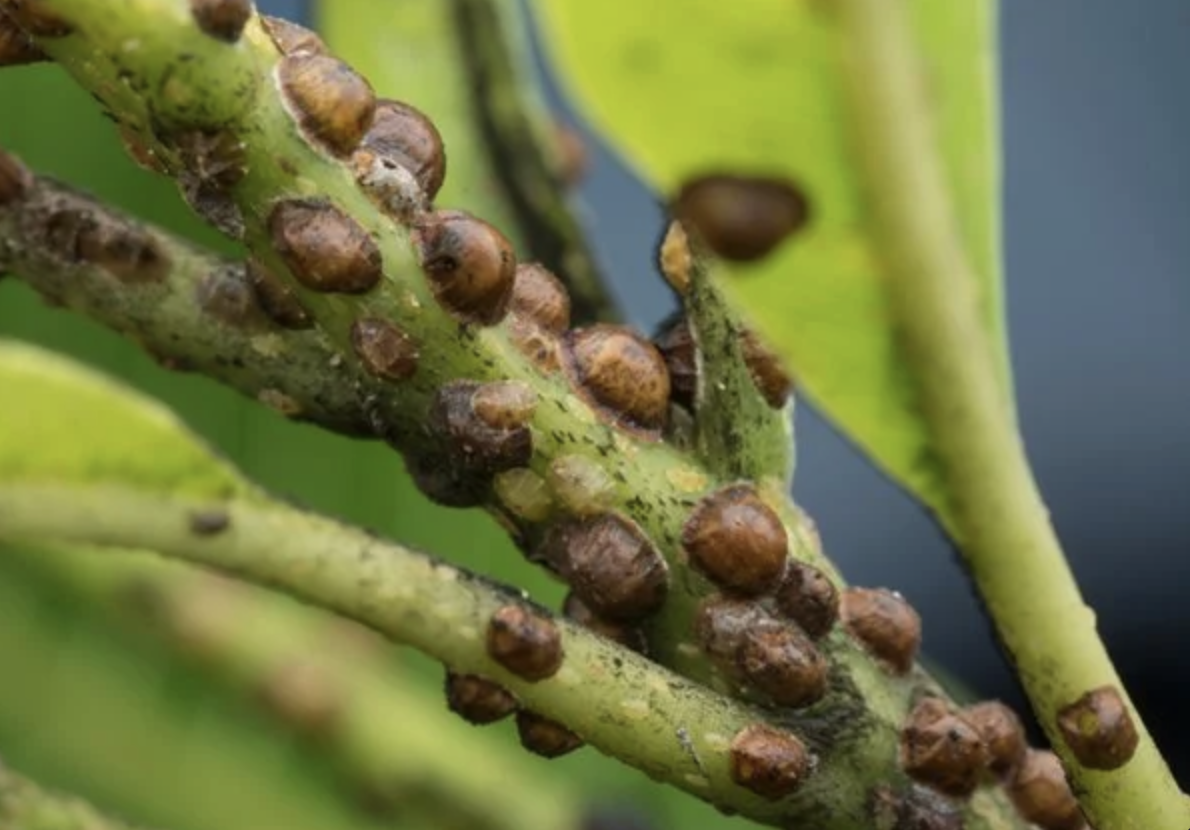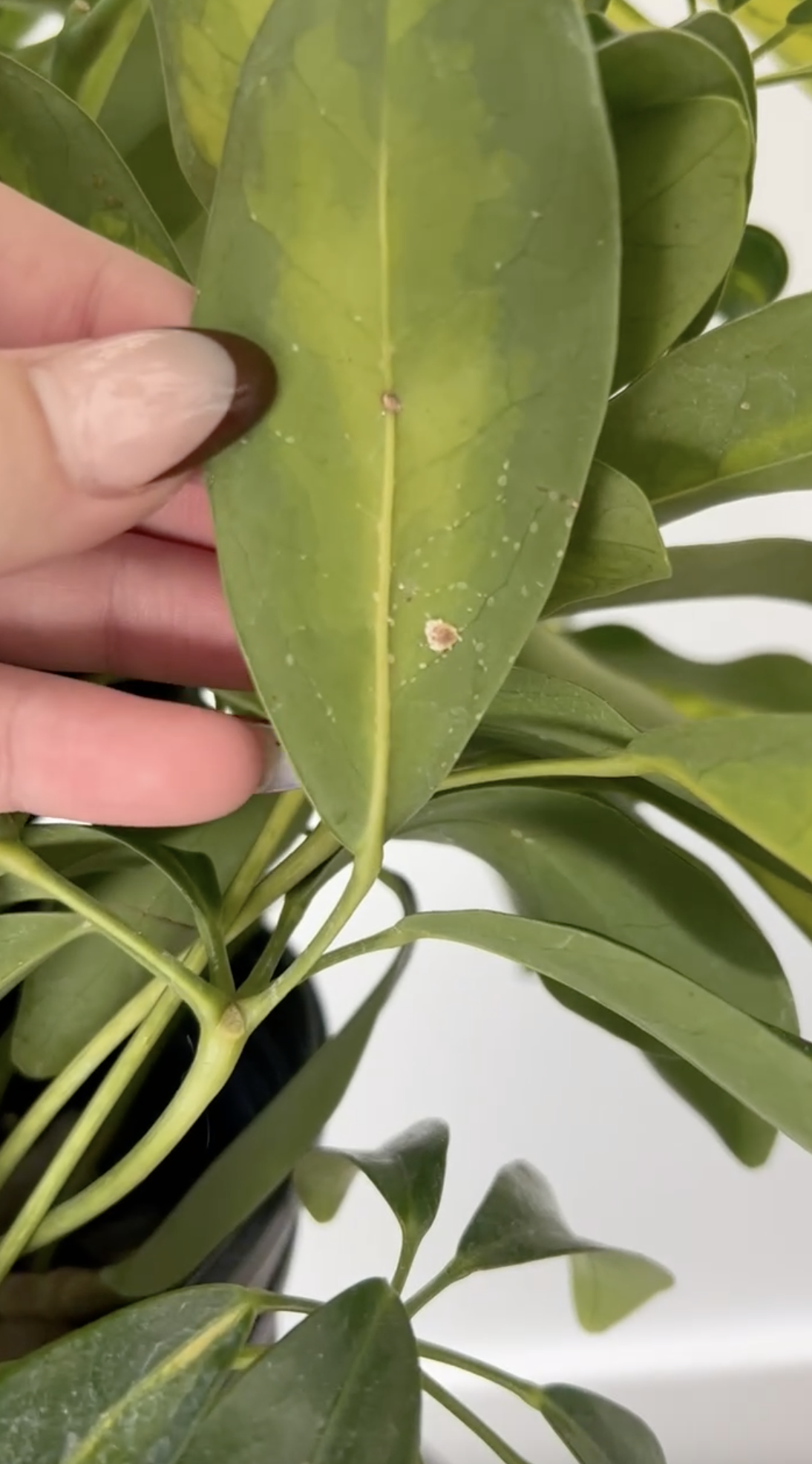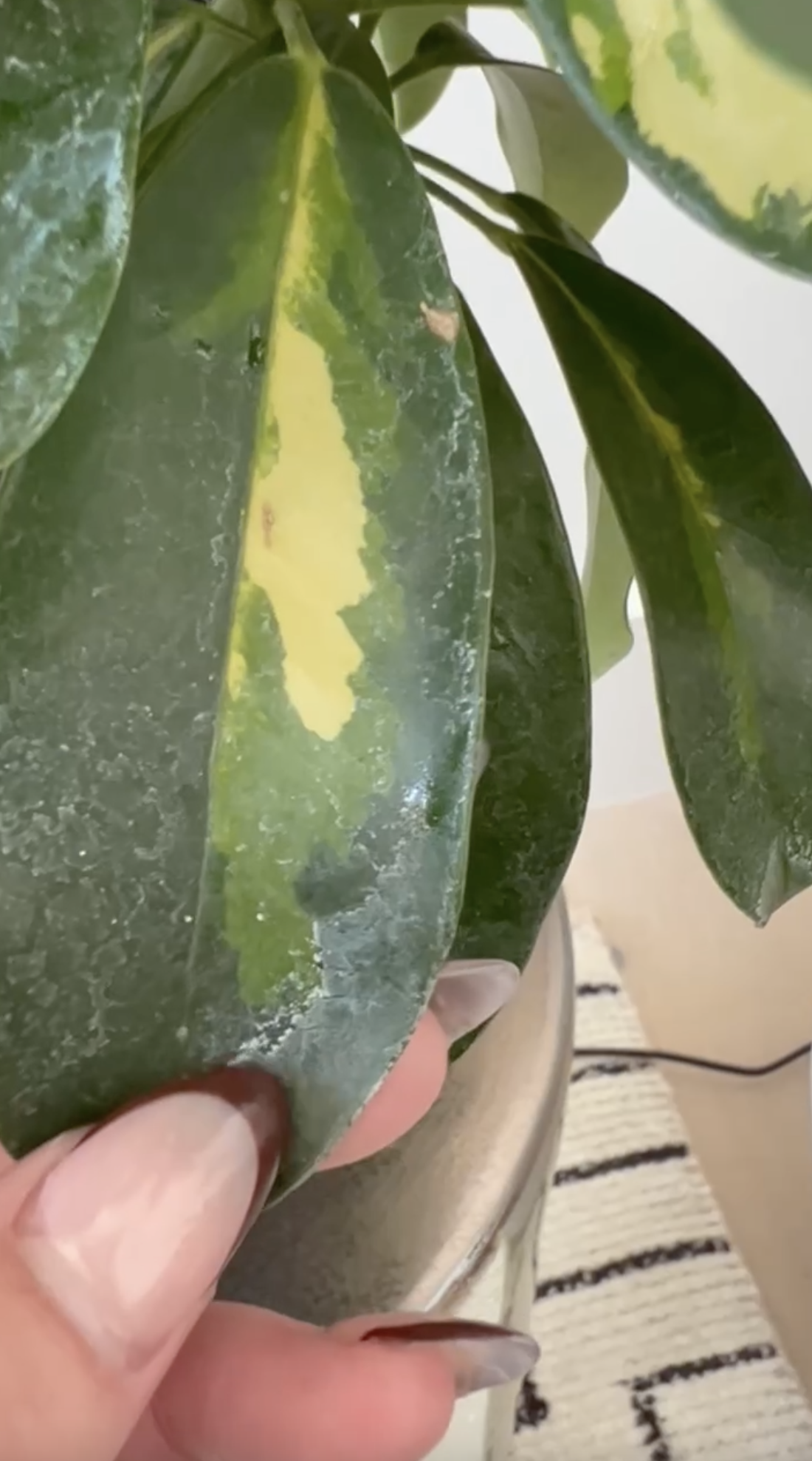All About Scale
Scale is often misdiagnosed by new plant parents– the tiny, armored bumps adhered to your plants stems, branches, or leaves may appear to be mechanical damage– but upon further inspection, you’ll be able to identify if the cause of your plants’ malaise is scale and treat it accordingly.
Photo: davey.com
Scale varies in color, size, and appearance but one tell-tale sign of scale is the presence of a sticky residue– scale secretes a honeydew substance. Their sinister sugars can even encourage fungus growth on your plant (to make matters worse.) Black fungus growth or sooty mold is another indicator that your plant may be dealing with scale.
There are two main classifications of scale: soft scale and hard scale. They often appear in clusters and the most common type of scale on houseplants is brown soft scale or Coccus hesperidum for any entomology heads out there. This type of scale is waxy, oval, and is often brown, black, or beige in color. There are thousands of different types of scale, but for the purposes of this article, we’ll focus on brown soft scale.
Photo: gardendesign.com
In order to effectively treat scale, it’s helpful to understand their life cycle. Female scale can produce hundreds of eggs under protective covers that will either look like waxy, oval coatings or white cottony clusters (similar in appearance to mealy bugs– which are in the scale family.) Once those eggs hatch, the insects are mobile only for a short time until they latch on to your poor plant, begin to feed, and develop waxy shells of their own– at this point in their life cycle, they are often referred to as crawlers.
Scale crawlers will hatch in the spring, begin to feed, molt, and become immobile– if left to their own devices, scale can even overwinter and begin this process all over again. Male scale does exist in the brown soft scale family, but reproduction is largely asexual.
The Cure
As always at the first sign of any pest problem, you’ll want to isolate your plant. Wash your hands and any tools you use on afflicted plants to prevent transmission to your other plants.
Everyone has their own preferred remedies when it comes to plant pests, but here are the methods we’ve found effective to eradicate scale.
Scale is adept at protecting itself throughout most of its life cycle– those armored shells tend to make the adult pests resistant to contact killer pesticides and even beneficials. This is why it’s important to thoroughly remove any shelled scale you see on your plants– be sure to check on the underside of leaves and in the joints of your plant.
We start treatment by thoroughly removing any adult armored scale from the plant. That can be done by spraying the adult scale off the plant with water or using diluted castile soap or horticultural oil on a microfiber cloth to remove scale by hand.
If certain branches or leaves on your plant are overrun with adult scale, simply prune the highly infested area off and discard them.
After you’ve removed any adult scale you can see, spray it down with your chosen pest treatment to attack any crawlers that may be present. For mild infestations, we suggest diluted castile soap, horticultural oil, or beneficial bugs.
If your scale infestation is severe, it may be time to get out the big guns… chemical pesticides. Ventigra is an effective treatment for scale, just be sure you’ve removed any armored scale you see first. Keep in mind though, using strong chemicals on your plant can kill harmful pests, but they can also kill the beneficial microorganisms on your plant, leading to health issues in the future, so it’s best to save strong chemicals for severe infestations. Be sure to read labels carefully for safe application and wash your hands thoroughly after use.
To treat scale effectively, you have to kill off the crawlers– as they are the most vulnerable to pest treatments. You may need multiple applications of pest treatment to ensure that you’re stopping any new generations. We recommend spraying your plant with your chosen treatment weekly until you’re no longer seeing any signs of scale.
Prevention
As we’ve said in previous articles, checking up on your plants regularly is the key to pest management. Thoroughly check any new plant you bring home for pests or pest damage– you can even quarantine new plants until you’re certain they are pest free!
Sticky residue produced by scale ^
Introducing beneficials is an easy and effective way to prevent pest issues in your home. Simply apply the beneficials as directed and watch nature do its thing!
As always, if you’re looking for more help with your plants, feel free to reach out to us!
Happy planting!
Kelly





